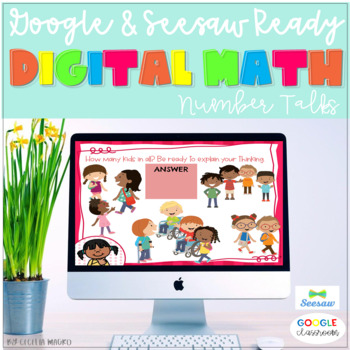First Grade Math Number Talks Month 1 Number Sense
- PDF
- Google Apps™

Also included in
- No-prep math and literacy digital activities for your elementary classroom. Digital math and literacy for your kindergarten, second, or first grade classroom.Paperless, digital and engaging math and literacy centers. Students will be practicing and interacting with math and literacy in a variety ofPrice $89.95Original Price $172.42Save $82.47
Description
Are you looking for no prep 1st grade math activities? These number talks are so easy to use. Just project and teach! Build number sense and mathematical reasoning. It includes 4 weeks of number talks perfect for first grade. After students look at the math picture, they record their thinking. Students then explain their thinking.
Number talks are a purposeful mathematical activity that take about 10 minutes to complete. Number talks are beneficial in helping students develop number sense and become strategic mathematicians. Number Talks also improve students' computational strategies and mathematical reasoning abilities. These are a must have for any first grade math teacher!
Click on the preview button to see what is included. As always, please ask questions before purchasing. Thank you so much!♥
Click here to follow me and find out about updates, freebies, and new resources!
More Number Talks:
First Grade Math Number Talks Month 2
First Grade Math Number Talks Month 3
First Grade Math Number Talks Month 4
Copyright ©Cecelia Magro
All rights reserved by author. Permission to copy for single classroom use only. Electronic distribution limited to single classroom use only. Not for public display.
Follow me!
This is part of my GOOGLE CLASSROOM DIGITAL MATH CENTERS THE BUNDLE Distance Learning.
Other Math Resources:
First Grade Math Number Talks Month 2 Google and Seesaw DISTANCE LEARNING
Ten and More Digital Math Google Interactive
First Grade Math Number Talks Month 3 Google and Seesaw DISTANCE LEARNING
Number Bonds to 20 Google Interactive
Addition Digital Math Centers Google Interactive
Nonstandard Units of Measurement Google Drive






